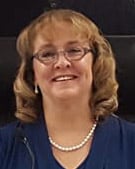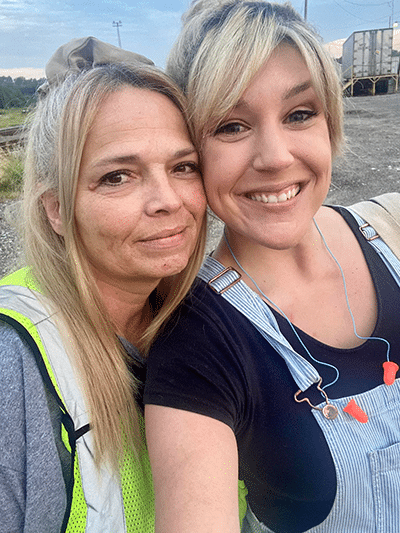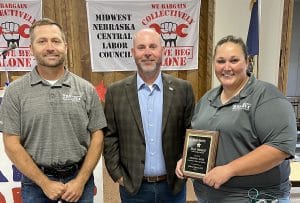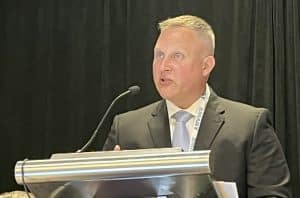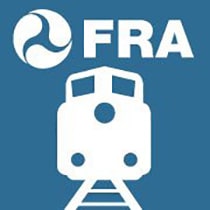Joint safety initiative provides employees confidential forum to report safety issues
ATLANTA and INDEPENDENCE, OH (January 29, 2024) — Norfolk Southern Corporation (NYSE: NSC), the International Association of Sheet Metal, Air, Rail and Transportation Workers – Transportation Division (SMART-TD), and the Brotherhood of Locomotive Engineers and Trainmen (BLET), in partnership with the Federal Railroad Administration (FRA), announced Monday their joint participation in an FRA Confidential Close Call Reporting System (C3RS) pilot program designed to enhance railroad safety.
“NS is proud to partner with our labor leaders and FRA to make another industry-leading advancement in safety,” said Alan H. Shaw, Norfolk Southern President and CEO. “We are committed to setting the gold standard for rail safety, and we are proud to be the first Class I railroad to deliver on our promise to co-develop and launch a C3RS program.”
Under the one-year C3RS pilot, covered NS employees can report safety concerns with the certainty that such reports will not result in discipline. NASA will deidentify data and provide it for review by a joint committee of NS and labor representatives, who, with FRA’s guidance, will identify and implement corrective actions to improve safety.
“This is huge step forward for the safety of our brothers and sisters at Norfolk Southern,” said SMART-TD President Jeremy Ferguson. “SMART-TD has been a long-time champion of C3RS, and this new program will allow our members to speak up when they see unsafe conditions without fear of negative repercussions. I would like to thank General Chairpersons James Ball, Joe Borders, Tommy Gholson, David Phillips, and Dan Weir for their unwavering commitment to bringing C3RS to their members.”
“It should be the goal of everyone who works in the railroad industry to continually improve safety,” said BLET National President Eddie Hall. “Providing a confidential platform to report unsafe practices allows us to harness the power of every worker’s voice. NS and its CEO, Alan Shaw, should be applauded for taking this step. I hope that this will become a model for other Class I freight railroads.” Added Hall, “I also would like to commend the leadership shown by General Chairmen Scott Bunten, Dewayne Dehart, and Jerry Sturdivant who helped make this happen by negotiating on behalf of our NS members.”
Participation in this C3RS pilot underscores NS, SMART-TD and BLET’s shared belief that collaboration and transparency are foundational pillars of an effective safety program. Key goals of the C3RS pilot program include:
- Collecting currently unreported unsafe practices, behaviors, or situations;
- Identifying and implementing corrective actions; and
- Sharing general trends and statistics to enhance railroad safety.
Throughout the program, FRA will provide oversight, guidance, and support to the parties as they analyze safety data and work to effect positive change.
“FRA’s C3RS program provides a useful industry-wide platform to gather valuable insights from frontline railroad workers when they experience close calls – helping to uncover risks and providing opportunities for railroads and their workers to take actions to prevent serious safety incidents,” said Amit Bose, FRA Administrator. “We appreciate BLET, NS, and SMART-TD’s collaboration on this important partnership, and FRA remains committed to further expanding participation in the C3RS program to advance safety.”
###
About Norfolk Southern
Since 1827, Norfolk Southern Corporation (NYSE: NSC) and its predecessor companies have safely moved the goods and materials that drive the U.S. economy. Today, it operates a customer-centric and operations-driven freight transportation network. Committed to furthering sustainability, Norfolk Southern helps its customers avoid approximately 15 million tons of yearly carbon emissions by shipping via rail. Its dedicated team members deliver more than 7 million carloads annually, from agriculture to consumer goods, and is the largest rail shipper of auto products and metals in North America. Norfolk Southern also has the most extensive intermodal network in the eastern U.S., serving a majority of the country’s population and manufacturing base, with connections to every major container port on the Atlantic coast as well as the Gulf of Mexico and Great Lakes. Learn more by visiting www.NorfolkSouthern.com.
NS Media Inquiries: Media Relations; NS Investor Inquiries: Luke Nichols
About the BLET
The Brotherhood of Locomotive Engineers and Trainmen represents nearly 57,000 professional locomotive engineers and trainmen throughout the United States employed in both freight and passenger rail. Founded in 1863, BLET is the oldest union in the United States. The BLET also is the founding member of the Rail Conference, International Brotherhood of Teamsters. For more information visit the union’s website at www.BLET.org.
BLET Media Inquiries: Jamie Horwitz
About SMART-TD
SMART Transportation Division is comprised of approximately 125,000 active and retired members who work in a variety of different crafts in the transportation industry. These crafts include employees on every Class I railroad, Amtrak, many shortline railroads, bus and mass transit employees and airport personnel. More information about the union is available at www.smart-union.org.
SMART-TD Media Inquiries: Ben Nagy


